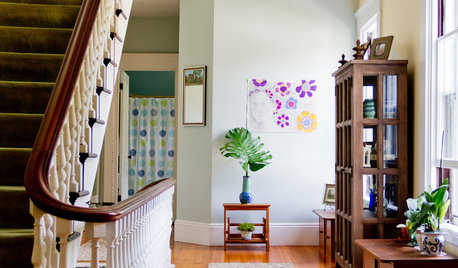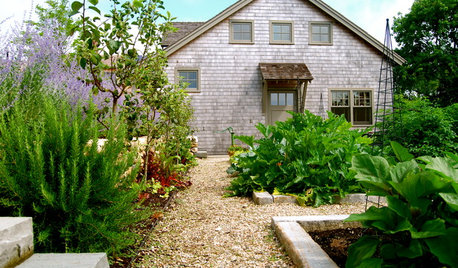soil mixture ratios
ecb_nuseries
14 years ago
Related Stories

LANDSCAPE DESIGNHow to Shape a Rain Garden and Create the Right Soil for It
Learn how to grade, lay out and amend the soil in your rain garden to support your plants
Full Story
GARDENING GUIDESGet on a Composting Kick (Hello, Free Fertilizer!)
Quit shelling out for pricey substitutes that aren’t even as good. Here’s how to give your soil the best while lightening your trash load
Full Story
HEALTHY HOMEGet the Lead Out: Lead Safety at Home
Keep your family safe by properly testing for and dealing with lead in old painted surfaces, water and soil
Full Story
GROUND COVERSGround Force: 10 Top Ground Covers for Your Garden
Protect your soil from weeds and drought this summer with a living mulch of ground covers
Full Story
GARDENING GUIDESGarden Myths to Debunk as You Dig This Fall and Rest Over Winter
Termites hate wood mulch, don’t amend soil for trees, avoid gravel in planters — and more nuggets of garden wisdom
Full Story
GARDENING GUIDESLearn the Secret to Bigger and Better Roses
Grow beautiful roses using both ordinary and unusual soil amendments
Full Story
EDIBLE GARDENSNatural Ways to Get Rid of Weeds in Your Garden
Use these techniques to help prevent the spread of weeds and to learn about your soil
Full Story
GARDENING GUIDESThe Simple Secret to Gardening Success
Learn the kinds of soil and a DIY type test to make sure you’re putting the right plant in the right place
Full Story
GARDENING GUIDESHow to Prep Your Ground for a Healthy New Lawn
Seed or sod that falls on weedy, lumpy soil is a wasted effort. Follow these steps to ensure that your new lawn will thrive
Full Story
HOUSEPLANTSBaby Tears Mimics Moss for a Green Accent Indoors
This adaptable spreader thrives in water or soil, making it a terrific addition to containers and living walls
Full Story







rhizo_1 (North AL) zone 7
lazy_gardens
Related Professionals
Ilchester Landscape Architects & Landscape Designers · Middle Island Landscape Architects & Landscape Designers · Maple Valley Landscape Contractors · Corona Landscape Contractors · Kahului Landscape Contractors · National City Landscape Contractors · Peoria Landscape Contractors · Quincy Landscape Contractors · Northlake Landscape Contractors · Alvin Decks, Patios & Outdoor Enclosures · Estero Decks, Patios & Outdoor Enclosures · Fort Mill Decks, Patios & Outdoor Enclosures · Morgan Hill Decks, Patios & Outdoor Enclosures · Westford Decks, Patios & Outdoor Enclosures · Wildomar Decks, Patios & Outdoor Enclosurestapla (mid-Michigan, USDA z5b-6a)
ecb_nuseriesOriginal Author
tapla (mid-Michigan, USDA z5b-6a)
ecb_nuseriesOriginal Author
Kimmsr
ecb_nuseriesOriginal Author
tapla (mid-Michigan, USDA z5b-6a)
lazy_gardens
ecb_nuseriesOriginal Author
tapla (mid-Michigan, USDA z5b-6a)
spaghetina
tapla (mid-Michigan, USDA z5b-6a)
spaghetina
blueyz133
Michael
bpgreen
ecb_nuseriesOriginal Author